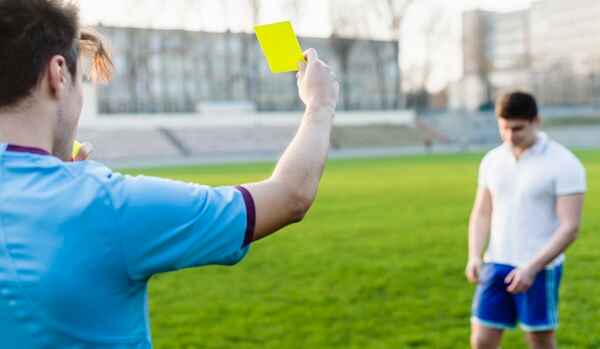Sports are evolving, and technology is an important part of it today; how a game is played and judged has changed. The idea of autonomous referees has recently gained a lot of buzz. Sports decisions are no longer limited to human capabilities, and these robotic systems aim to be precise and fast. Referees of the future will use tools such as sensors, artificial intelligence, and machine learning to make decisions on the field in a way that’s never been done before. To understand their potential is first to understand why they are being developed at all.
Why Human Referees Fall Short
Technology can assist human referees in addressing the challenges they encounter. Fatigue is common in high-intensity games that last for hours. Mistakes can also arise from limited visibility and the need for split-second decision-making. Even experienced referees can overlook critical moments due to their positioning or distractions on the field. Additionally, unconscious biases might influence decisions in ambiguous situations or when subjective judgment calls are necessary. In fast-paced sports, referees may not always witness incidents as they occur, leading to disputes and inconsistent results.
Ultimately, no one likes wrong results. And this applies to both sports and casino games. Well, by visiting the online casino real money, you can immerse yourself in incredible excitement! Thousands of slots and a bunch of other games are already waiting for you there.

How Autonomous Referees Work
Advanced technologies are used by autonomous referees to make decisions. Often, these systems combine multiple sensors, e.g., cameras, microphones, and motion detectors, to track the game in real time. The collected data is processed by artificial intelligence, which analyzes player movements, ball trajectories, and even rule violations in fractions of a second. These systems use machine learning to study past matches, learn from errors, and improve their prediction of the outcome of future matches. Wearable devices are used in some systems to measure things like the speed and position of players. However, these tools can also detect fouls or out-of-bound actions without human input.
Examples of Automation in Sports Today
Technology is already being used by many sports to help referees, and it’s a natural progression to go fully automated. Hawk-Eye has systems that trackball trajectories with the precision of extreme and goal-line technology that decides whether the ball went over the line. They are task-focused tools that are still dependent on human judgment when making final decisions. We can examine how close sports are to fully autonomous referees by examining current implementations.
Here are a few technologies currently used:
- Motion sensors to track player positions.
- Wearable devices measuring acceleration and speed.
- Audio systems for detecting impact sounds.
- Video replay tools for detailed analysis.
However, even with their success, these tools require calibration for various sports, and their reliability depends on regular updates and maintenance. Moreover, integrating AI systems can further enhance their capabilities, improving decision accuracy across different scenarios. Just imagine how cool it would be if the next World Cup were judged by robots. In order not to miss such important news, a great solution would be to download the MelBet app APK. Break into the world of betting now!
Advantages of Robotic Referees
Automated referees could transform sports officiating. They provide consistent rulings free from fatigue or outside influences. Robotic systems can simultaneously observe events from multiple angles, lowering the chances of errors in quick or intricate scenarios. Their ability to analyze data instantly allows for almost immediate decisions, resulting in minimal game disruptions.
No matter the weather conditions, these systems are designed to work in indoor courts or outdoor fields. The second reason is that it helps their ability to store and process huge amounts of game data, which in turn helps them with rule enforcement and post-game analysis in order to create better player performance insights.
The Challenges of Going Fully Autonomous
But robotic referees are still far from reality. Accuracy can be limited by technical constraints, such as obtaining accurate calibration for different sports. If not addressed right away, errors in sensor readings or software glitches could disrupt games. Another hurdle is that developing AI systems that understand nuanced rules, like subjective fouls, is difficult for sports where human interpretation of intent is involved.
Ethical and legal issues arise regarding accountability for poor decisions. Disputes related to technology should be addressed by sports organizations. Additionally, incorporating robotic referees into current systems is expensive and requires regular maintenance, posing challenges for smaller leagues with restricted budgets.

Sports That Could Benefit Most
Certain sports are more suited for the implementation of autonomous referees than others. In fast-paced games like basketball and soccer, where split-second decisions are vital, the benefits are most significant. Additionally, considering socioeconomic factors could offer a more impartial approach to scoring intricate sports such as gymnastics and figure skating, focusing on performance elements.
These sensors are applicable in combat sports like boxing and martial arts to accurately measure punches and movements for scoring. Although timing systems are already used in track and field and motorsports, these sports could also benefit from automated rule enforcement in racing. Furthermore, there are technologies designed to monitor safety regulations, including tracking illegal tackles in rugby and football.

